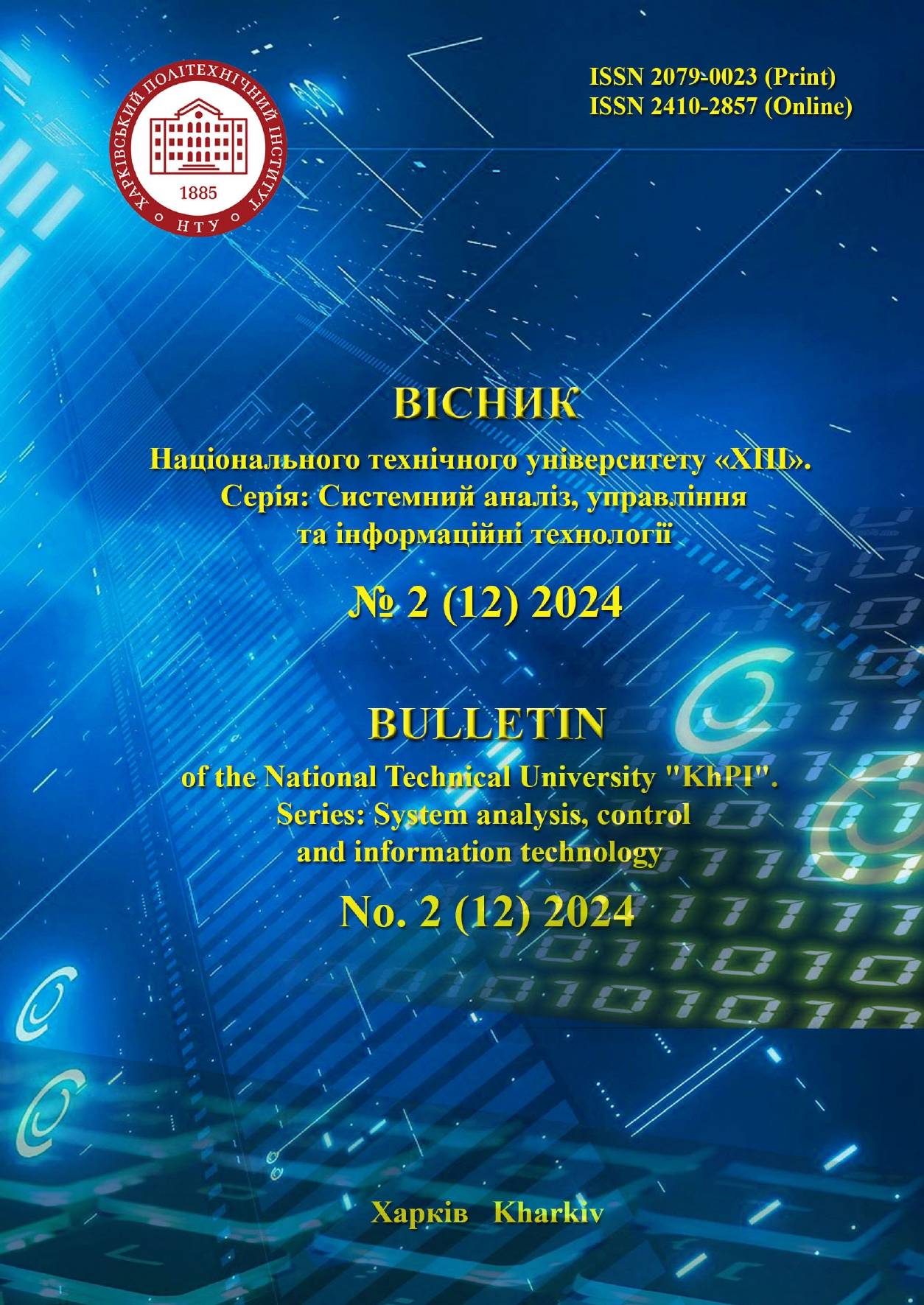INTELLIGENT TECHNOLOGY FOR SEMANTIC COMPLETENESS ASSESSMENT OF BUSINESS PROCESS MODELS
DOI:
https://doi.org/10.20998/2079-0023.2024.02.09Keywords:
business process modeling, BPMN, semantic similarity, SBERT, text comparison, business process optimization, natural language processingAbstract
In this paper, we present a method for comparing business process models with their textual descriptions, using a semantic-based approach based on the SBERT (Sentence-Bidirectional Encoder Representations from Transformers) model. Business process models, especially those created with the BPMN (Business Process Model and Notation) standard, are crucial for optimizing organizational activities. Ensuring the alignment between these models and their textual descriptions is essential for improving business process accuracy and clarity. Traditional set similarity methods, which rely on tokenization and basic word matching, fail to capture deeper semantic relationships, leading to lower accuracy in comparison. Our approach addresses this issue by leveraging the SBERT model to evaluate the semantic similarity between the text description and the BPMN business process model. The experimental results demonstrate that the SBERT-based method outperforms traditional methods, based on similarity measures, by an average of 31%, offering more reliable and contextually relevant comparisons. The ability of SBERT to capture semantic similarity, including identifying synonyms and contextually relevant terms, provides a significant advantage over simple token-based approaches, which often overlook nuanced language variations. The experimental results demonstrate that the SBERT-based approach, proposed in this study, improves the alignment between textual descriptions and corresponding business process models. This advancement is allowing to improve the overall quality and accuracy of business process documentation, leading to fewer errors, introducing better clarity in business process descriptions, and better communication between all the stakeholders. The overall results obtained in this study contribute to enhancing the quality and consistency of BPMN business process models and related documentation.
References
Jošt G., Polančič G., Heričko M., Kocbek M. Business process model and notation: The current state of affairs. Available at: https://doi.org/10.2298/CSIS140610006K (accessed: 20.09.2024).
Von Rosing M., White S., Cummins F., De Man H. Business process model and notation-BPMN. Available at: https://doi.org/10.1016/B978-0-12-799959-3.00021-5 (accessed: 20.09.2024).
Mroczek A., Wiśniewski P., Ligęza A. Overview of Verification Tools for Business Process Models. Available at: https://doi.org/10.15439/2017f308 (accessed: 20.09.2024).
Ottensooser A., Fekete A., Reijers H., Mendling J., Menictas C. Making sense of business process descriptions: An experimental comparison of graphical and textual notations. Available at: https://doi.org/10.1016/j.jss.2011.09.023 (accessed: 20.09.2024).
Qurashi A., Holmes V., Johnson A. Document Processing: Methods for Semantic Text Similarity Analysis. Available at: https://doi.org/10.1109/INISTA49547.2020.9194665 (accessed: 20.09.2024).
Zhou S., Xu X., Liu Y., Chang R., Xiao Y. Text Similarity Measurement of Semantic Cognition Based on Word Vector Distance Decentralization with Clustering Analysis. Available at: https://doi.org/10.1109/ACCESS.2019.2932334 (accessed: 20.09.2024).
Li Z., Chen H., Chen H. Biomedical Text Similarity Evaluation Using Attention Mechanism and Siamese Neural Network. Available at: https://doi.org/10.1109/ACCESS.2021.3099021 (accessed: 20.09.2024).
Wu D., Zhang M., Shen C., Huang Z., Gu M. BTM and GloVe Similarity Linear Fusion-Based Short Text Clustering Algorithm for Microblog Hot Topic Discovery. Available at: https://doi.org/10.1109/ACCESS.2020.2973430 (accessed: 20.09.2024).
Liu Y., Xu Q., Tang Z. Research on Text Classification Method Based on PTF-IDF and Cosine Similarity. Available at: https://doi.org/10.1109/ICIIBMS46890.2019.8991542 (accessed: 20.09.2024).
Zhengfang H., MacHica I., Zhimin B. Textual Similarity Based on Double Siamese Text Convolutional Neural Networks and Using BERT for Pre-training Model. Available at: https://doi.org/10.1109/ICAIBD55127.2022.9820371 (accessed: 20.09.2024).
Dauzhan G., Iskakov A., Kenzhegaliyev M., Bui D. Dynamic Text Modeling and Categorization Framework based on Semantics Extraction and Similarity Checking. Available at: https://doi.org/10.1109/CSCI58124.2022.00132 (accessed: 20.09.2024).
Toshevska M., Stojanovska F., Kalajdjieski J. Comparative Analysis of Word Embeddings for Capturing Word Similarities. Available at: https://doi.org/10.5121/csit.2020.100402 (accessed: 20.09.2024).
Business Process Model and Notation (BPMN), Version 2.0. Available at: https://www.omg.org/spec/BPMN/2.0/PDF (accessed: 20.09.2024).
Reimers N., Gurevych I. Sentence-BERT: Sentence embeddings using siamese BERT-Networks. Available at: https://doi.org/10.18653/v1/d19-1410 (accessed: 20.09.2024).
Large Language Models: SBERT – Sentence-BERT. Available at: https://towardsdatascience.com/sbert-deb3d4aef8a4 (accessed: 20.09.2024).
BPMN for research. Available at: https://github.com/camunda/bpmn-for-research (accessed: 20.09.2024).
Downloads
Published
How to Cite
Issue
Section
License

This work is licensed under a Creative Commons Attribution 4.0 International License.
Authors who publish with this journal agree to the following terms:
- Authors retain copyright and grant the journal right of first publication with the work simultaneously licensed under a Creative Commons Attribution License that allows others to share the work with an acknowledgement of the work's authorship and initial publication in this journal.
- Authors are able to enter into separate, additional contractual arrangements for the non-exclusive distribution of the journal's published version of the work (e.g., post it to an institutional repository or publish it in a book), with an acknowledgement of its initial publication in this journal.
- Authors are permitted and encouraged to post their work online (e.g., in institutional repositories or on their website) prior to and during the submission process, as it can lead to productive exchanges, as well as earlier and greater citation of published work (See The Effect of Open Access).


